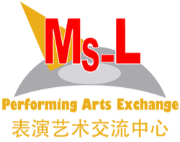Feng shui
[/et_pb_divi_atm][et_pb_divi_atm admin_label=”Advanced Text” global_module=”2677″ saved_tabs=”all” background_layout=”light” text_orientation=”left” text_font_size_tablet=”51″ text_line_height_tablet=”2″ use_border_color=”off” border_color=”#ffffff” border_style=”solid”] | 1. Confucianism | 2.Taoism | 3. Buddhism | 4. Chinese Food | 5. Chinese Medicine | 6.Chinese Tea | 7. Chinese Astrology | 8. Chinese Painting | 9. China-Porcelain |
| 10. Silk, Embroidery and Brocade | 11. Fengshui | 12. Paifang | 13. Calligraphy | 14. Paper-Cuttings | 15. Music | 16. Literature | [/et_pb_divi_atm]
 Fengshui, a special Chinese tradition in architecture, usually links the whole process from site selection, designing, construction and interior and exterior decorating in ancient times. Feng means wind and shui is water.
Fengshui, a special Chinese tradition in architecture, usually links the whole process from site selection, designing, construction and interior and exterior decorating in ancient times. Feng means wind and shui is water.
Fengshui combines the trinity of the Heaven, the Earth and humans, and seeks harmony between selected site, orienting, natural doctrine and human fate. It repulses human destruction of nature and stresses cohabitation with the environment, which is regarded as perfect and occult.
 In China, a fengshui practitioner, or a diviner, usually applies theories as Yingyang, Sixiang, Wuxing and Bagua, based on the principle of the Heaven and the Earth in harmony, to select an optimum place for burial site or accommodation.
In China, a fengshui practitioner, or a diviner, usually applies theories as Yingyang, Sixiang, Wuxing and Bagua, based on the principle of the Heaven and the Earth in harmony, to select an optimum place for burial site or accommodation.
Qi, deemed as the basic element of the physical world in ancient Chinese philosophy, is the essence of fengshui. The art of fengshui advocates there is a certain field, sort of like magnetic field, termed as qi field. An auspicious qi field is what fengshui practitioners seek while an evil one is what they strive to avoid. There are five elements – long (dragon), xue (cave), sha (sand), shui (water) and xiang (orientation). They are used to avoid evil qi and gain auspicious qi. In order to keep qi of the Heaven and the Earth in harmony in the construction of a new structure, earth vein should not be spoiled. The best orientation is a building with its face facing a river or a lake in the south and back against a hill in the north.
Most ancient cities in China were built under guidance of fengshui, which was the main principle used to select locations based on their environmental surroundings. Fengshui helps to plan placement of structures of significance and confirm the location of city central axis. Usually the central axis of a city, or certain other architectural complex, ought to face certain peak of mountains nearby to make the city magnificent and solemn. For example, the Imperial Palace in Beijing was placed on the very center of the city, and its central axis points at Jingshan Mountain which was called Guard Mountain of the Palace.
Fengshui practitioners also emphasize pagodas and their site location since pagodas are believed capable of protecting residents around them.
Although there are still many people who believe it, many people now doubt this theory.
